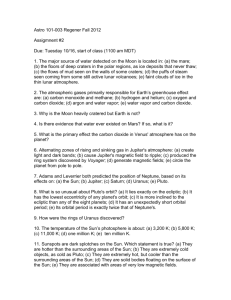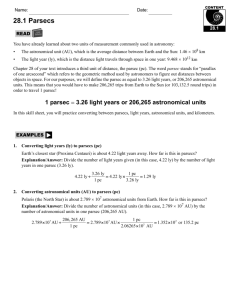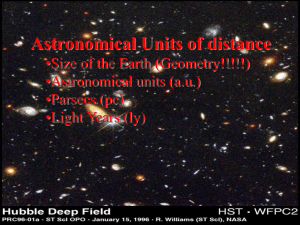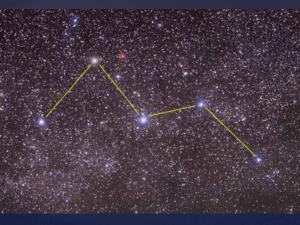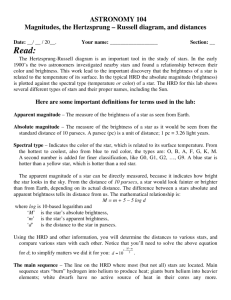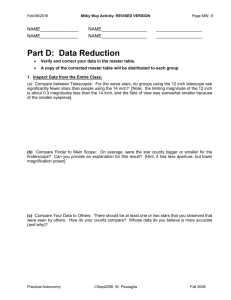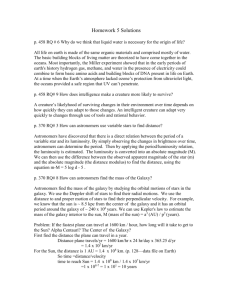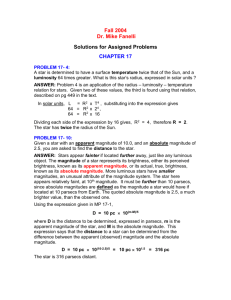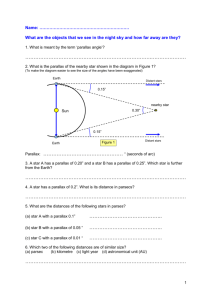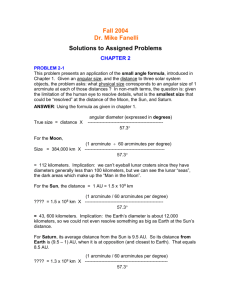The Hand of Chandra! - Chandra X
advertisement
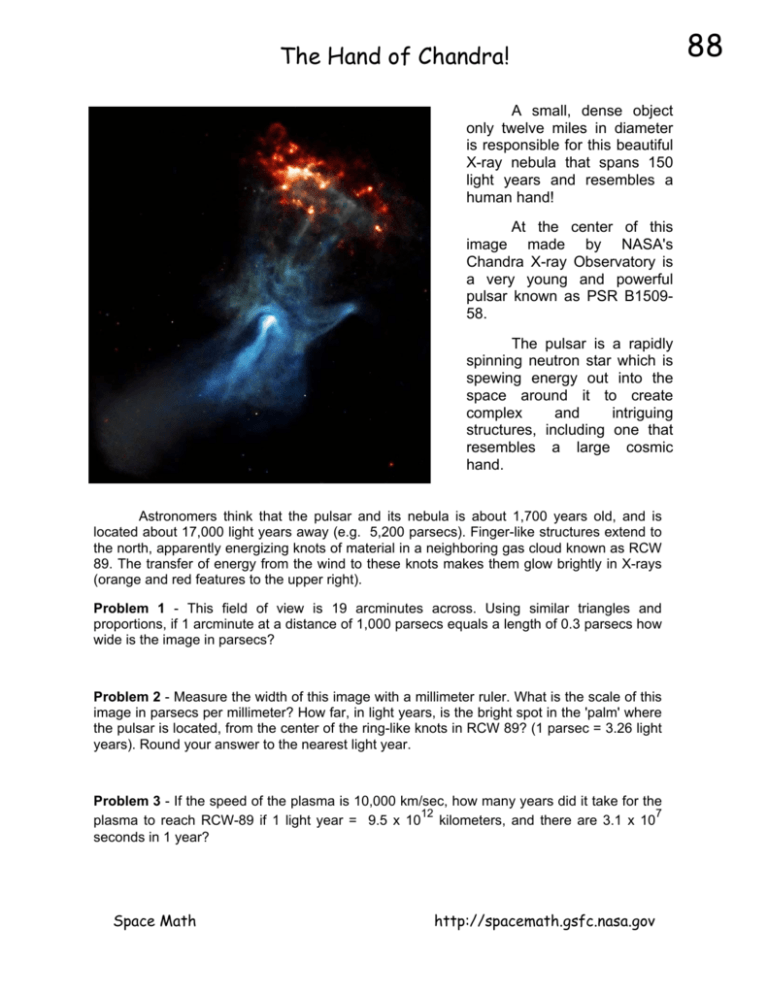
The Hand of Chandra! A small, dense object only twelve miles in diameter is responsible for this beautiful X-ray nebula that spans 150 light years and resembles a human hand! At the center of this image made by NASA's Chandra X-ray Observatory is a very young and powerful pulsar known as PSR B150958. The pulsar is a rapidly spinning neutron star which is spewing energy out into the space around it to create complex and intriguing structures, including one that resembles a large cosmic hand. Astronomers think that the pulsar and its nebula is about 1,700 years old, and is located about 17,000 light years away (e.g. 5,200 parsecs). Finger-like structures extend to the north, apparently energizing knots of material in a neighboring gas cloud known as RCW 89. The transfer of energy from the wind to these knots makes them glow brightly in X-rays (orange and red features to the upper right). Problem 1 - This field of view is 19 arcminutes across. Using similar triangles and proportions, if 1 arcminute at a distance of 1,000 parsecs equals a length of 0.3 parsecs how wide is the image in parsecs? Problem 2 - Measure the width of this image with a millimeter ruler. What is the scale of this image in parsecs per millimeter? How far, in light years, is the bright spot in the 'palm' where the pulsar is located, from the center of the ring-like knots in RCW 89? (1 parsec = 3.26 light years). Round your answer to the nearest light year. Problem 3 - If the speed of the plasma is 10,000 km/sec, how many years did it take for the 12 7 plasma to reach RCW-89 if 1 light year = 9.5 x 10 kilometers, and there are 3.1 x 10 seconds in 1 year? Space Math http://spacemath.gsfc.nasa.gov 88 82 Answer Key Problem 1 - This field of view is 19 arcminutes across. Using similar triangles and proportions, if 1 arcminute at a distance of 1,000 parsecs equals a length of 0.3 parsecs how wide is the image in parsecs? Answer: If 0.3 parsecs seen from a distance of 1,000 parsecs subtends an angle of 1 arcminute, then 1 arcminute at a distance of 5,200 parsecs will subtend X -------------- = 0.3 parsecs so that 5,200 parsecs ----------------1,000 parsecs X = 0.3 x (5200/1000) = 1.6 parsecs. Then 19 arcminutes will subtend X 19 arcminutes -------------- = ----------------- 1.6 parsecs 1 arcminute so that X = 1.6 x (19/1) = 30.4 parsecs. Problem 2 - Measure the width of this image with a millimeter ruler. What is the scale of this image in parsecs per millimeter? How far, in light years, is the center of the 'palm' where the pulsar is located, from the ring-like knots in RCW 89? (1 parsec = 3.26 light years). Answer: The width is about 96 millimeters. The scale is then 30.4 parsecs/96 millimeters or 0.32 parsecs/millimeter. The distance from the bright spot to the ring of knots is about 40 millimeters. At the scale of the image, this equals 40 mm x 0.32 pc/mm = 12.8 parsecs. Converting this to light years we get 12.8 parsecs x (3.26 light years/parsec) or 12.8 x 3.26 = 41.728 light years, which is rounded to 42 light years. Problem 3 - If the speed of the plasma is 10,000 km/sec, how many years did it take for the plasma to reach RCW-89? Answer: Time = distance/speed. First convert light years to kilometers: 42 light years 12 14 x (9.5 x 10 kilometers/light year) = 4.0 x 10 kilometers. Then divide this by the 14 10 speed to get Time = 4.0 x 10 kilometers / (10,000 km/s) = 4.0 x 10 seconds. 10 7 Converting this to years: 4.0 x 10 seconds x ( 1 year/3.1 x 10 seconds) = 1,300 years. Space Math http://spacemath.gsfc.nasa.gov
